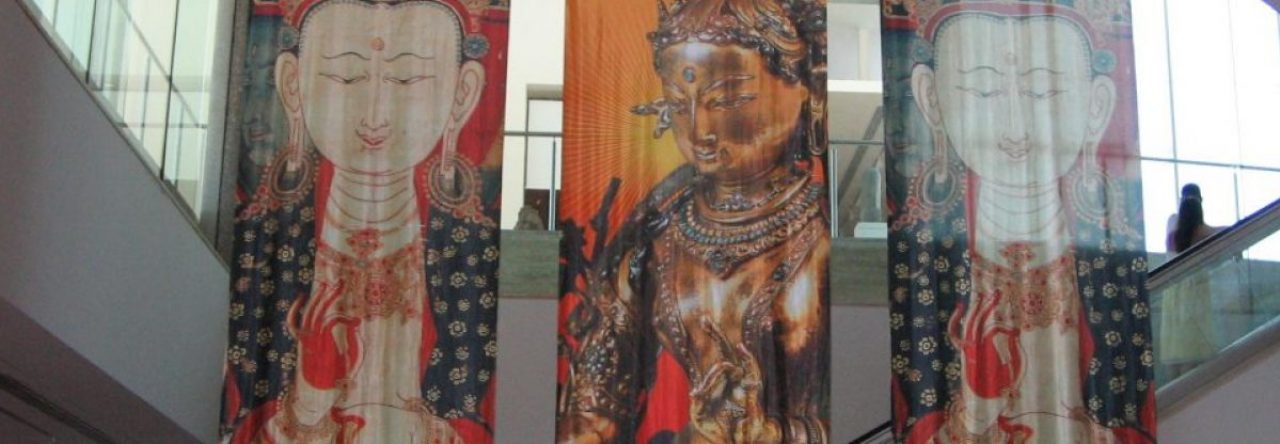Continuing with the translation of MN 119, the ‘Mindfulness of Body (Kāyagatāsati) Sutta.’ The Buddha instructs his disciples (i.e., those undertaking the discipline)…
“Again, seekers, a seeker contemplates this very body – however it is placed and whatever its posture – in respect of the four primary elements: ‘In this body, there is the earth element, the water element, the fire element, and the air element.’
Just as, Seekers, a skilled butcher or their apprenctice, having killed a cow, might sit at the crossroads with the dissected portions, a seeker contemplates this very body – however it is placed and whatever its posture, she reviews it [in terms of] the four primary elements: ‘In this body, there is the earth element, the water element, the fire element, and the air element.’
“As she dwells thus, ardent, diligent and committed, her thoughts about mundane life are abandoned and hence the mind becomes inwardly steadied, quieted, unified and collected. In this way a practitioner develops mindfulness of the body.”
___________
The Four Great Elements of the Body.
Note that in this analysis, at present, we are just looking at the elements as found in the body. It is possible to find correlates of these elements in ‘the mind,’ but that is not our subject here.
Text: “atthi imasmiṃ kāye pathavīdhātu āpodhātu tejodhātu vāyodhātū.” “There are in this body, earth-element (pathavīdhātu), water-element (āpodhātu), fire-element (tejodhātu), air [or wind]-element (vāyodhātū).’
The practitioner inspects the body and discovers it in these qualities, which, for a beginning, we can define thus: earth = the solid, resistant, or hard element of the body; water = fluidity, wetness; fire = temperature (varying levels of warmth and cold); and air = movement or mobility.
It’s interesting that none of these stays the same from moment to moment – they are always alive and interactive, lighting up from moment to moment. It can also be easily observed, in these experiential reveiws which we do of the body during the day, that the hardness element varies according to one’s posture, one’s environment, and level of consciousness of one’s body. It can also be discovered, that when we have one element, we have the others.
Exploring the breath is particularly interesting from the movement point of view. How do you know you are breathing? Much of it (besided the sensations in the nostrils and nasal passages) is due to movement in the body. Also, temperature can be explored in the difference between the in-breath and out-breath. How do you know a particular breath is either an in-breath or an out-breath? If one’s perception is subtle enough, it’s likely a combination of all of the elements. Explore it. (Just note, if you are a beginner, it can be a little scary letting your breath breathe itself. But begin to learn how that can happen, just the same.)
The idea of these ‘elements’ isn’t to provide a scientific model for material events, but to encourage directly seeing what one is actually sensing. The word ‘body’ presents an entity that is much more than a thing – it is a subtle and complex set of perceptual events. If it wasn’t for sensations of this order of subtelty, how would one know there is a ‘body,’ for designating so. ‘Body’ is an aggregation of events – this body is conditions.
So, a personal note – during the night I was intimately contemplating my body, in terms of the elements, and I began to wonder, given my fibromyalgia (which was keeping me awake), then, where does pain fit in with this schema? Then I realised that it isn’t meant to – ‘pain’ is a word which designates something which is not a primary element of the body.
This can be seen by the fact that when you go 100% into pain, it changes. This isn’t the same for the four elements – go 100% into them, and (near enough, considering the space element may arise) they remain what they are: solid or soft, wet or dry, warm or cool, and moving or still. Pain, on the other hand, can even occasionally dissolve upon complete acceptance.
This contemplation makes possible the discernment of the difference between the fundamental presentation of the body, and the presentations that we call ‘mental.’ Once one’s inner poise (samādhi) is steady enough, discerning the basics of the body makes possible the discovery, on their own ground, of the kinds of experience that we designate as ‘mind’; and it becomes possible to see the inter-relation of these experiential dimensions.
What’s the purpose of all this? Freedom. It is even possible, once we are ‘inwardly steadied, quieted, unified and collected’, and when we are familiar with bodily and mental phenomena, to call into question whether there are even such ‘things’ as ‘moments’ to justify such phrases as ‘from moment to moment’ – and so, to become unbound.
May all being enjoy exploring the four great elements!
